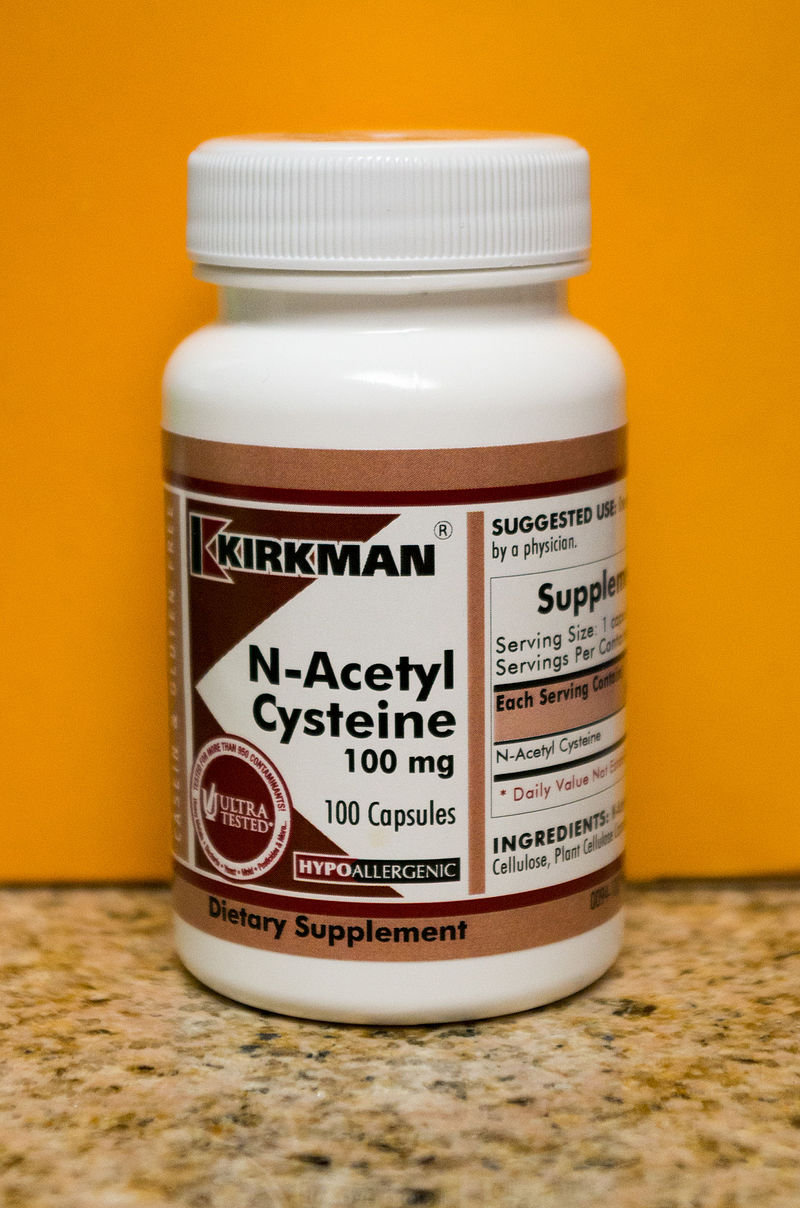What is the Difference Between NAC and Glutathione
Table of Contents
The key difference between NAC and glutathione is that NAC is an immediate precursor for glutathione, whereas glutathione is an antioxidant compound that exists in plants, animals, fungi, bacteria, and some archaea.
N-acetylcysteine or NAC is a form of acetylcysteine, and it is banned from being used in supplements. Glutathione is an antioxidant compound that exists in plants, animals, fungi, bacteria, and some archaea.
CONTENTS
1. Overview and Key Difference
2. What is NAC
3. What is Glutathione
4. NAC vs Glutathione in Tabular Form
5. Summary – NAC vs Glutathione
What is NAC?
N-acetylcysteine or NAC is a form of acetylcysteine. It comes from the amino acid L-cysteine. There are many uses of NAC and it is approved by the FDA as a drug. Although some dietary supplements contain N-acetylcysteine, according to US FDA guidelines, it is illegal for dietary supplements to contain this product. This is because N-acetylcysteine is actually an approved drug. But you can obtain prescription N-acetyl cysteine products under the guidance of healthcare providers.

Figure 01: NAC
As a prescription drug, this medication is used by doctors to treat acetaminophen overdose, and it can also help break up mucus in people having some lung diseases. In addition, NAC is an immediate precursor to a very precious substance named glutathione. Along with amino acids glutamine and glycine, NAC is required to make and replenish glutathione.
We can increase the cellular levels of glutathione by ingesting NAC. Then NAC is absorbed from the digestive tract, and it also releases cysteine into the bloodstream.
What is Glutathione?
Glutathione can be defined as an antioxidant compound that exists in plants, animals, fungi, bacteria, and some archaea. L Glutathione is the most abundant isomer of glutathione; therefore, it is generally known as glutathione. This compound is able to prevent damage to the important cellular components, which are caused by reactive oxygen species, including free radicals, peroxides, lipid peroxides, and some heavy metals.

Figure 02: The Chemical Structure of Glutathione
When considering the chemical structure of L-glutathione, it is a tripeptide compound having a gamma peptide linkage between cysteine and the carboxyl group (in the glutamate side chain). It is freely soluble in water and insoluble in organic solvents such as methanol and diethyl ether.
There are two steps of the biosynthesis of L-glutathione. The first step includes the synthesis of gamma-glutamylcysteine from L-glutamate and cysteine. The second step includes the addition of the C-terminal of gamma-glutamylcysteine catalyzed by glutathione synthetase.
As an antioxidant, it can protect the cells by neutralizing reactive species of oxygen. In addition, it can participate in thiol protection and redox regulation in cellular thiol proteins (in the presence of oxidative stress). Moreover, glutathione takes part in many metabolic reactions, including the biosynthesis of leukotrienes and prostaglandins.
What is the Difference Between NAC and Glutathione?
NAC and glutathione are related chemical structures. The key difference between NAC and glutathione is that NAC is an immediate precursor for glutathione, whereas glutathione is an antioxidant compound that exists in plants, animals, fungi, bacteria, and some archaea.
Below is a summary of the difference between NAC and glutathione in tabular form for side by side comparison.
Summary – NAC vs Glutathione
N-acetylcysteine or NAC is a form of acetylcysteine, and it is banned from being used in supplements. Glutathione can be defined as an antioxidant compound that exists in plants, animals, fungi, bacteria, and some archaea. The key difference between NAC and glutathione is that NAC is an immediate precursor for glutathione, whereas glutathione is an antioxidant compound that exists in plants, animals, fungi, bacteria, and some archaea.
Reference:
1. “Supplements to Increase Glutathione in the Body?” Office for Science and Society, McGill. 4 Aug. 2017.
Image Courtesy:
1. “Kirkman N-Acetyl Cysteine 100mg” By Patrick Pelletier – Own work (CC BY-SA 4.0) via Commons Wikimedia
2. “Glutathione” By Jjexpat – Own work (CC BY-SA 4.0) via Commons Wikimedia
ncG1vNJzZmivp6x7pbXFn5yrnZ6YsqOx07CcnqZemLyue9ahmK1lmah6tbTEZpuinpaav6a6wp5km52krLKmuoynmJxlkaOxbrPLrquarJievK%2Bxjg%3D%3D